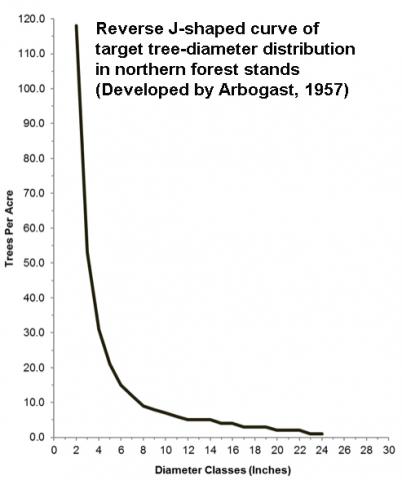Using Multiple Long-term Data Sets to Evaluate Dynamics and Characteristics of Managed Uneven-aged Northern Forest Stands

Selection system silviculture should create and maintain a stable tree diameter distribution that managers can repeatedly recreate over multiple cutting cycles. The target diameter distribution is represented by a reverse-J-shaped-graph (developed by Arbogast, 1957) sustained by regular recruitment of new trees, coupled with sufficient growth of trees in all age classes to compensate for mortality and removals. NSRC researchers investigated uneven-aged northern hardwood stands treated with single-tree selection cuttings, and even-aged stands managed with selection-like cuttings. Both scenarios applied traditional uneven-aged guidelines to regulate stem density across the diameter classes. Researchers evaluated the outcomes using long-term data from 31 northern hardwood stands in New York, Michigan, and Wisconsin. Two stands remained uncut; three even-aged stands had selection-like cuttings; and cutting in the 25 uneven-aged stands followed the Arbogast guidelines.
Researchers visually assessed changes in diameter distributions over time and statistically tested that change within each cutting cycle and between consecutive ones. They compared long-term variation of median diameter, stem density, basal area, and tree diameter distributions. Single-tree selection cuttings in uneven-aged northern hardwood stands created and maintained a target diameter distribution that remained stable with repeated cutting treatments. With selection-like cuttings for six 10-year cutting cycles in even-aged stands, tree diameter distribution morphed away from a reverse-J-shape through time, becoming unstable and unsustainable.
Findings demonstrate that the selection system will sustain consistent structural characteristics in uneven-aged northern hardwood stands. By contrast, treating second-growth even-aged northern hardwoods with selection-like cuttings results in structural instability through time, necessitating alternative approaches for their management.
